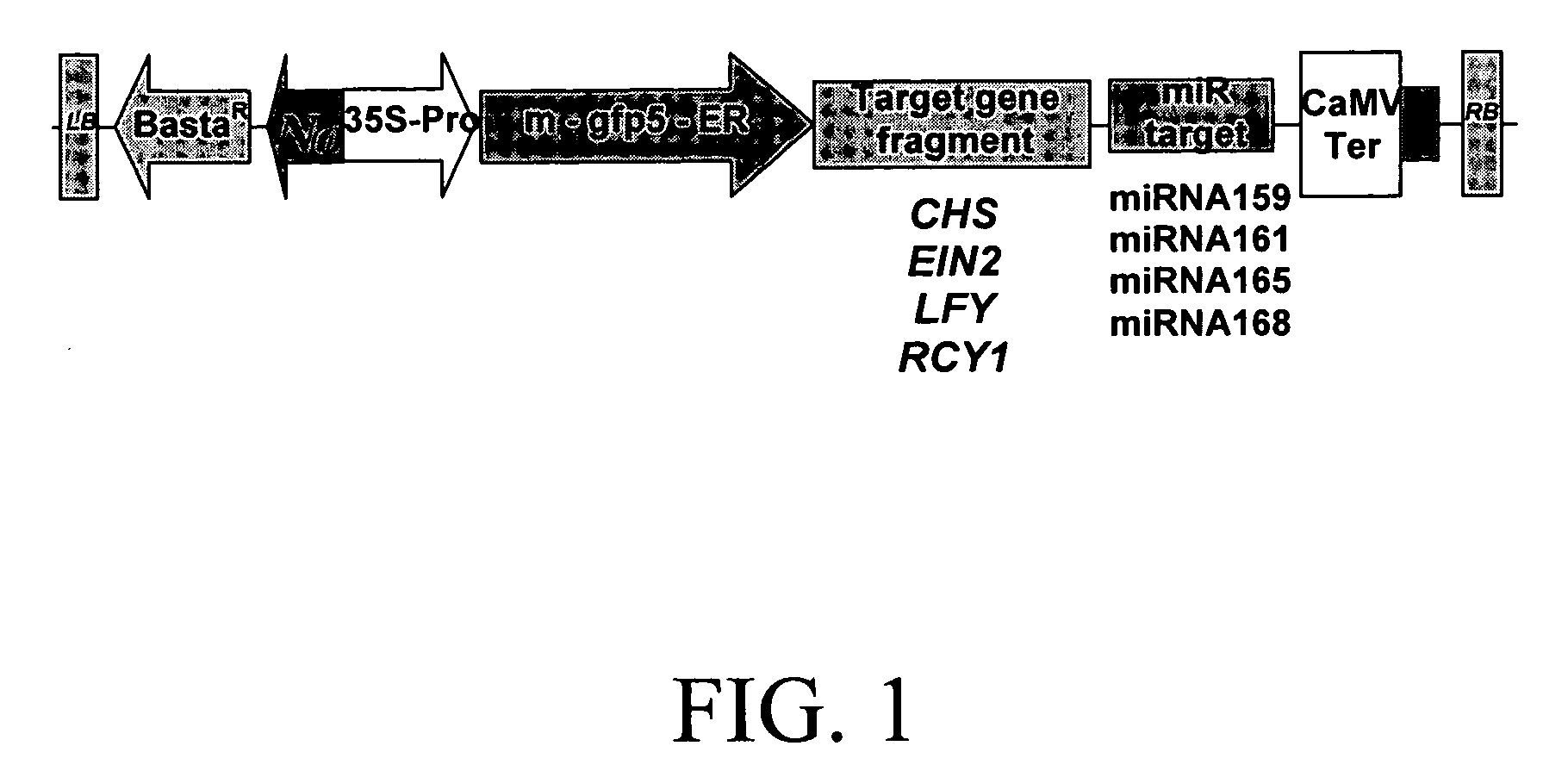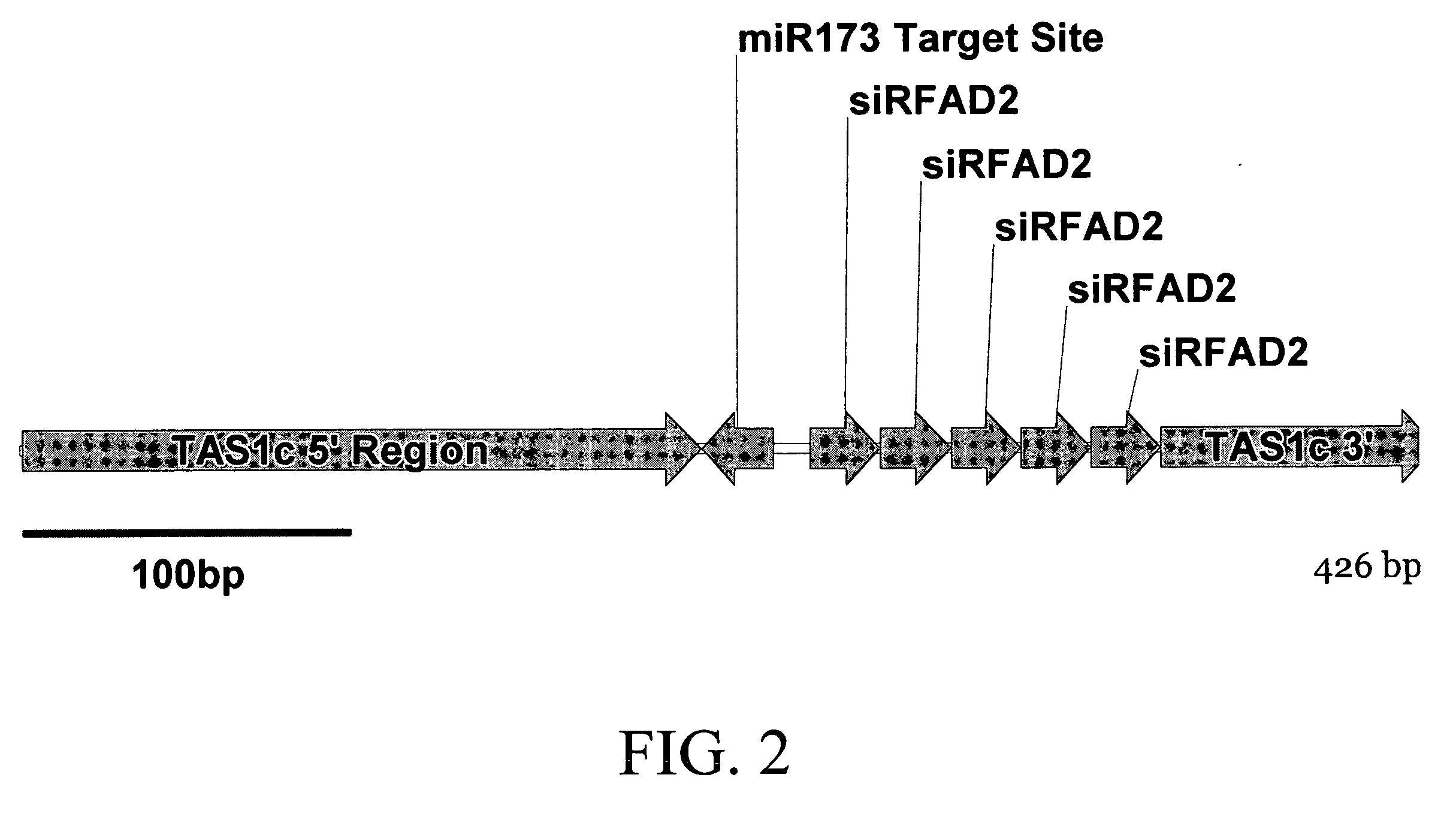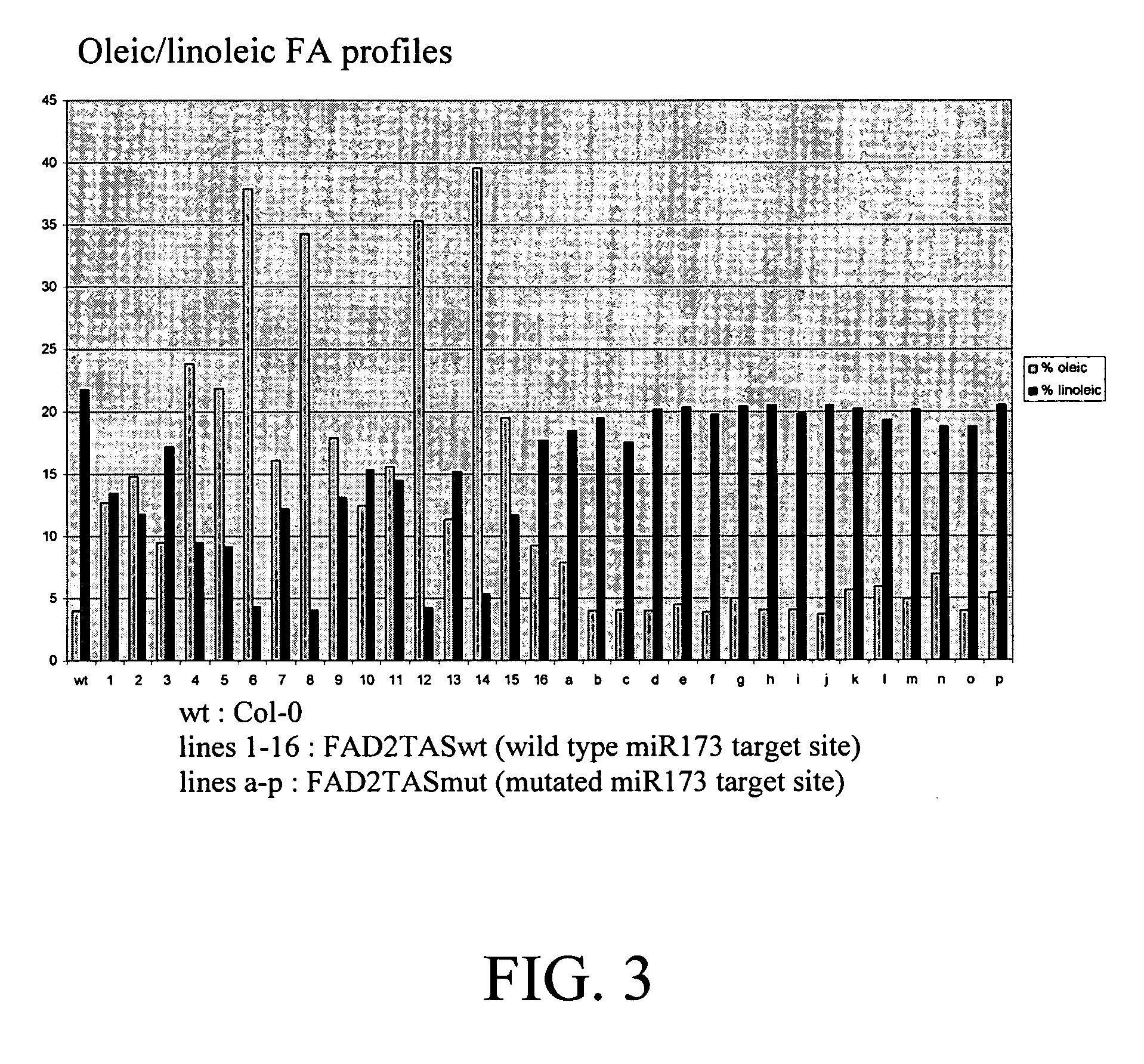Methods and compositions for gene silencing
a technology applied in the field of molecular biology and gene silencing, can solve problems such as lack of fluorescence, achieve the effects of reducing the expression level of target polynucleotides, increasing the level of oleic acid, and altering the nutritional value of proteins
- Summary
- Abstract
- Description
- Claims
- Application Information
AI Technical Summary
Benefits of technology
Problems solved by technology
Method used
Image
Examples
example 1
Silencing Using Trigger Sequences in Arabidopsis with a Color Marker as Supplementary Indicator
[0098]FIG. 1 shows the structure of the construct used. Between the left and right borders of a standard Agrobacterium transformation vector the following components are placed: the Basta selectable marker driven by the nos promoter and the 35S promoter driving a chimeric construct comprising the GFP polynucleotide, a silencer sequence (fragment of the gene to be silenced), and the trigger sequence followed by the terminators of the 35S gene. The four genes chosen as genes to be silenced are all involved in phenotypes such that loss of function is not lethal but is evident by simple visual inspection of the plants or virus inoculation. The four miRNA targets used as trigger sequences are chosen because the corresponding miRNAs are expressed in different tissues. miR159 is constitutive and abundant (SEQ ID NO:1); miR161 is not active in leaves (SEQ ID NO:2); miR165 (SEQ ID NO:3) and miR168...
example 2
Silencing Using Trigger Sequences Attached to Synthetic Arrays of 21 mers
[0100] A chimeric polynucleotide is constructed in which the target site for Arabidopsis miRNA (miR167; Reinhart et al. (2002) Genes and Development 16: 1616-1626) is used as trigger sequence and is operably linked to the 5′ end of a silencer sequence. The silencer sequence comprises a synthetic DNA fragment containing multiple 21 nucleotide segments complementary to the Arabidopsis fatty acid desaturase 2 (FAD2) gene. Each 21 nucleotide segment is designed to possess the characteristics required for efficient incorporation into RISC as described by Khvorova et al. ((2003) Cell 115: 199-208) and Schwarz et al. ((2003) Cell 115: 209-216). The 35S promoter and leader sequence (Odell (1985) Nature 313: 810-812) are attached to the 5′ end of the chimeric construct and the phaseolin transcriptional terminator (Barr et al. (2004) Molecular Breeding 13: 345-356) to the 3′ end. The entire chimeric polynucleotide is in...
example 3
Silencing Using Trigger Sequences in Soybean Embryos
[0101] In order to provide trigger sequences, miRNAs active in soybean embryos are cloned and characterized as follows: RNA is prepared from somatic embryos. The size fractionated sRNAs are ligated to 3′ and 5′ RNA-DNA adaptors, PCR amplified using adaptor-specific primers and cloned into plasmid vectors using standard procedures (Llave et al. (2002) Plant Cell 14, 1605-1619). Abundant sRNAs are identified from the sequence analysis of the cloned sRNAs and their complementary nucleotide sequence is incorporated as the trigger element of chimeric constructs as described below. Alternatively, constructs encoding exogenous miRNA can be expressed in the plant and the corresponding trigger sequence for the exogenous miRNA can be employed.
[0102] A. Silencing of a Lipid Biosynthetic Gene
[0103] i. A Chimeric Construct Comprising the Following is Constructed:
[0104] 1. A silencer sequence comprising a 300 nt fragment from nucleotide 363 ...
PUM
| Property | Measurement | Unit |
|---|---|---|
| temperature | aaaaa | aaaaa |
| temperature | aaaaa | aaaaa |
| temperature | aaaaa | aaaaa |
Abstract
Description
Claims
Application Information
 Login to View More
Login to View More - R&D
- Intellectual Property
- Life Sciences
- Materials
- Tech Scout
- Unparalleled Data Quality
- Higher Quality Content
- 60% Fewer Hallucinations
Browse by: Latest US Patents, China's latest patents, Technical Efficacy Thesaurus, Application Domain, Technology Topic, Popular Technical Reports.
© 2025 PatSnap. All rights reserved.Legal|Privacy policy|Modern Slavery Act Transparency Statement|Sitemap|About US| Contact US: help@patsnap.com



